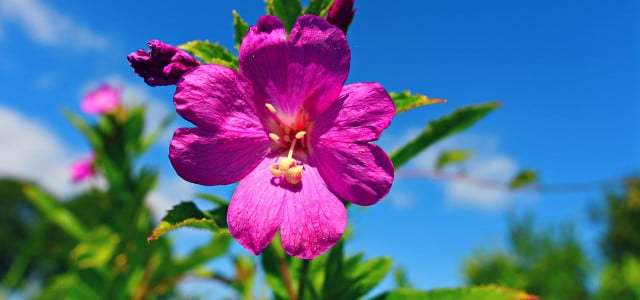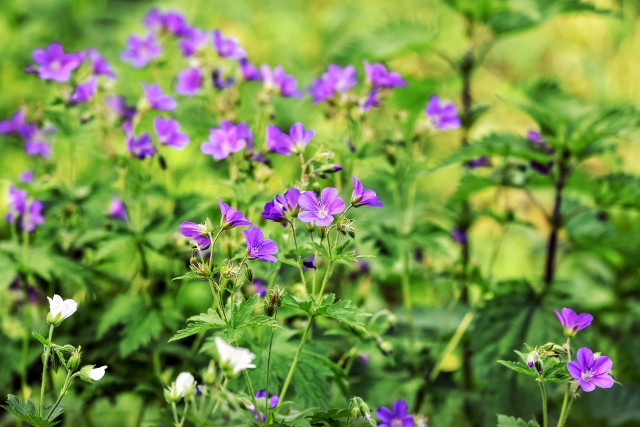
Cranesbill is especially popular as a garden plant because of its decorative foliage and colorful flowers. How to properly grow and care for the perennial, you will learn in this article.
Cranesbill forms a genus of plants that includes almost 400 species. Some of them are even evergreen and decorate gardens with their leaves and flowers all year round. In addition, the cranesbill does not have high demands on its location. So even without a green thumb, you can grow the perennial plant both in a container and in a bed.
Cranesbill: How to plant it correctly

Depending on the variety, cranesbill thrives well in different locations. Therefore, when buying seeds and planting balls, you should always pay attention to the enclosed planting instructions. With the following tips, you can also ensure that the perennial grows quickly.
- The right location: depending on the species, you can plant the cranesbill in sunny, semi-shady and even shady places.
- The right soil: Most cranesbill varieties thrive in well-drained, nutrient-rich soil. It’s best to mix some humus into the planting soil to further enrich it with nutrients. A calcareous soil is also beneficial.
- Plant cranesbill: In most cases, you can buy cranesbill as a plant ball. It is best to plant the perennial in the spring.
- Before planting, immerse the planting ball in a bucket of water until it is completely saturated. This can be seen by the fact that no more air bubbles rise to the surface of the water.
- Then dig a sufficiently large planting hole.
- If you want to plant several perennials, make sure that they have enough space to grow and do not interfere with each other. The planting distance for cranesbill differs depending on the variety. As a rule, it is 20 to 40 centimeters.
- Place the watered planting balls in the holes and cover them with the prepared humus.
- In the first weeks you should water the cranesbill well.
- Tip: If you want to use the cranesbill as a ground cover, the Balkan cranesbill is particularly suitable.
The right care for the cranesbill

Once you have planted the cranesbill in a suitable location, it will need little care. If you follow the care instructions below, you will be able to enjoy a particularly large number of flowers between June and July.
- Watering: Especially after planting, you should water the cranesbill regularly with rainwater. As soon as the perennial has grown, it can cope well with longer periods of drought. Only during prolonged heat should you also water the adult plants sufficiently.
- Fertilize: Shortly after budding in spring, the cranesbill can use some fertilizer. It is best to mix a little compost into the soil.
- Pruning: In the fall or spring, you can cut back the cranesbill where it grows beyond the edge of the bed. You can also encourage a second bloom by regularly removing the withered flower spikes.
- Propagation: You can propagate cranesbill with either seed or cuttings. Simply collect the seeds from the withered flowers and scatter them in a new location in spring.
- Diseases and pests: The cranesbill is a very robust plant genus. So it is safe from most diseases and pests, such as slugs.


